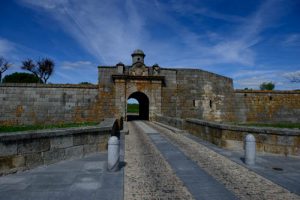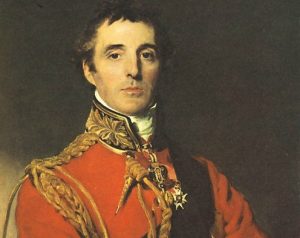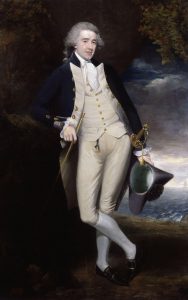 Sir Home Riggs Popham, who features in my recent book, An Unwilling Alliance, is one of the most fascinating characters I’ve read about during my research and I am completely unable to make up my mind how I feel about him. As a novelist rather than a historian, I need to be able to present a historical figure in a way that is believable and fits in with the perspective of my fictional characters, but in the case of Popham I find my heroes as ambivalent as I am.
Sir Home Riggs Popham, who features in my recent book, An Unwilling Alliance, is one of the most fascinating characters I’ve read about during my research and I am completely unable to make up my mind how I feel about him. As a novelist rather than a historian, I need to be able to present a historical figure in a way that is believable and fits in with the perspective of my fictional characters, but in the case of Popham I find my heroes as ambivalent as I am.
Popham had a wide and varied career and was the subject of much controversy during his lifetime. He was the subject of one court martial and several different investigations, none of which seemed to hold back his career to any great degree. He was a naval officer who seemed more comfortable with the army and was both admired and disliked by contemporaries. The Duke of York applauded his ability while Lord St Vincent seems to have loathed him. He was ambitious, talented and clearly very intelligent but seems to have had the kind of personality that made enemies as easily as friends.
Popham was born in Gibraltar in 1762 to Joseph Popham, consul at Tetuan. His mother died giving birth to him and his father later remarried. Between his two wives, Joseph Popham had a large number of children; sources seem to vary as to the number. Home Riggs Popham was educated at Brentford School and then at Westminster and may have been admitted to Trinity College, Cambridge, although it is not clear how much time he actually spent there. In 1778 at the age of 16 he entered the navy as a captain’s servant on board the Hyaena.
Popham’s early career in the navy was fairly typical. He was involved in a number of skirmishes and spent a few months as a prisoner of the French in 1781. He was promoted to lieutenant in 1783. Aboard the Nautilus in 1786 he was responsible for surveying the coast of south-west Africa, building a reputation as an excellent hydrographer.
Progress in the navy was often slow. There were more officers than good commands and many excellent men were unemployed and on half-pay awaiting a ship, including Popham in 1787. Obtaining leave from the Admiralty, he bought his first ship and sailed for India as a trader. He operated to and from India for several years, marrying the daughter of an East India Company officer, Elizabeth Prince, in 1788. During these years he continued with his surveying work, later publishing A Description of Prince of Wales Island with charts. He also discovered a new channel between the island and the mainland through which, in the spring of 1792, he piloted the company’s fleet to China and he was presented with a gold cup by the governor-general in council, who also strongly commended him both to the directors and the Admiralty.
Popham’s commercial activities, however, were causing some suspicion and in 1791 his ship was seized by an English frigate as a prize of war, brought into the Thames, and condemned as a droit of Admiralty for having traded in contravention of the East India Company’s charter. The case was far from clear and Popham appealed, eventually receiving £25,000 over a period of time, which left him with considerable losses. There were rumours that he had been smuggling. He had also failed to renew his leave and was consequently temporarily struck off the lieutenants’ list although he was reinstated in 1793.
In September of that year, Popham was appointed agent for transports at Ostend for the campaign in Flanders under the Duke of York. It was a job to which he was ideally suited, with his excellent organisational skills and understanding of logistics. He formed a corps of sea fencibles to defend Nieuport and distinguished himself to such a degree that on 27 July 1794 the Duke of York requested of the Admiralty that he be appointed superintendent of inland navigation and promoted to commander, an honour which earned him the nickname of ‘The Duke of York’s admiral’.
When the Allied forces retreated in 1795, Popham was in charge of the evacuation and proved himself so competent that in March of that year the Duke wrote to the First Lord requesting that Popham be promoted to the rank of post captain. It is very likely that this rapid promotion at the request of the army engendered some resentment among Popham’s naval colleagues.
During the invasion threat of 1798, Popham set up and commanded a district of sea fencibles. In May he submitted a plan for destroying the Saas lock at Ostend and was given, command of the expedition. The lock was destroyed, but because of worsening weather, the troops under Major-General Eyre Coote could not be re-embarked, and were obliged to surrender. The following year, Popham was sent to St Petersburg to attempt to persuade Tsar Paul to provide troops for a proposed landing in the Netherlands. He took the tsar and his family sailing which they apparently enjoyed so much that they presented Popham with a gold snuff-box and a diamond ring, and the tsar made him a knight of Malta. Popham secured the force needed and returned to England.
Later that year Popham was once again involved in inland navigation as an allied force under General Sir Ralph Abercromby landed on the Helder peninsula. It was poorly supported by the 10,000 Russian soldiers sent by the tsar and the campaign ended with another evacuation which Popham managed with his usual flair. He was awarded a pension of £500 a year and send back to Russia to try to mollify the tsar although Paul, furious at the failure of the campaign, refused to see him.
Back at sea, Popham began working on another project; the signalling system for which he is perhaps best known. His Telegraphic Signals, or Marine Vocabulary, provided ships with a flag system containing letters, words, and common phrases and enabled captains to communicate effectively. Popham’s code, was used by Nelson and his frigates at Trafalgar. It did not immediately supplant the official Signal Book for the Ships of War but was used to supplement it. Popham continued to improve the code over the next twelve years and it was widely used, finally being officially accepted by the Admiralty in 1812.
At the end of 1800 Popham commanded a troop ship with Abercromby’s army invading Egypt. Once there, he was commissioned by a secret committee of the East India Company to negotiate trade treaties with the sheriff of Mecca and other Arabian states as ambassador directly responsible to the governor-general of Bengal, Lord Wellesley. Popham was successful only with the Sultan of Aden. In addition he continued his surveying work, later publishing an excellent chart of the Red Sea.
On his return to England in1803 Popham found himself at the centre of another controversy, accused of having incurred ‘enormous and extraordinary’ expenses on repairs to his ship, the Romney in Calcutta. A series of investigations followed, during which Popham published A concise statement of facts relative to the treatment experienced by Sir Home Popham since his return from the Red Sea to rebut the charges. It appears that the case may have been fabricated by Lord St Vincent’s secretary, Benjamin Tucker, in the hope of currying favour and trading on the First Lord’s well-known dislike of Popham. The matter finally went to a select committee of the House of Commons which reported that the figures had been grossly exaggerated and Popham was innocent.
Popham had political ambitions and hoped to become a lord of the Admiralty. He served as a Pittite MP in several different constituencies between 1804 and 1812 and some of his naval appointments were undoubtedly the result of political favour. With his wide variety of interests, Popham became interested in the invention of ‘submarine bombs’ which proved unsuccessful in practical use. He also took an interest in the idea of attacking the Spanish colonies in South America, an idea which had been debated for some years, and in 1804 submitted a paper on the subject to William Pitt, after meeting the Venezuelan patriot, Francisco Miranda.
At the end of 1804 Popham was appointed to the Diadem and in August 1805 he sailed as commodore and commander-in-chief of an expedition to the Cape of Good Hope with a force under General Sir David Baird. The operation was a great success, with Popham leading his marine battalion during the attack, and the Dutch surrendered the colony. The squadron remained in Table Bay to guard against a possible French attack.
At this point, Popham conceived the idea of making an attack on the River Plate. Presumably he assumed that with the Tories, led by William Pitt, his patron, in power, he could expect tacit approval, particularly if he were successful. Reluctantly Baird allowed him to take 1200 men; the squadron sailed and at St Helena, Popham ‘borrowed’ a further 180 men. There he heard that Pitt was dead, but not who had replaced him.
On 25 June 1806 the small force under the command of Brigadier-General William Carr Beresford landed near Buenos Aires. With the addition of the marine battalion it totalled 1635 men. The Spanish were surprised and there was very little immediate resistance. The city surrendered on 2 July and Beresford took possession. Popham sent an enthusiastic open letter to the merchants of England announcing this lucrative new market for their goods. He had spoken too soon, however. By 10 August a force of 2000 Spaniards entered the city, overran Beresford’s men and took them prisoner. Popham and his squadron could do nothing but blockade the river and wait for reinforcements.
On 3 December, with reinforcements arriving, Rear-Admiral Charles Stirling arrived to with orders for Popham to return to England. On his arrival on 20 February 1807 he was put under open arrest to await court martial on two charges: of having withdrawn his squadron from the Cape without orders; and of having launched his Argentine enterprise ‘without direction or authority’.
Typically for Popham, this incident received a mixed reception. In Argentina, Popham is often seen as the catalyst of the independence which followed the invasion. To the Admiralty he was an officer who had acted improperly; to the City of London he had made a bold attempt to open up new markets, and he was presented with a sword of honour. He was tried at Portsmouth in March 1807, was found guilty and severely reprimanded.
Surprisingly, Popham’s career does not seem to have suffered from this. In July he was appointed captain of the fleet with Admiral James Gambier in the expedition against Denmark, and this is where we meet him in An Unwilling Alliance. Several other captains, including Hood, Keats and Stopford apparently protested at this appointment although it was probably Popham’s experience in joint operations which caused Gambier to ask for his appointment. Popham was one of the three officers appointed to negotiate with Denmark at the end of the bombardment, along with Wellesley and Murray.
Popham’s next command was of the 74 gun Venerable during the disastrous Walcheren campaign. Popham’s role in this particular fiasco was interesting, since he seems to have been heavily involved in the planning of the expedition. The blame for the failure of the campaign, which should probably have been shared between the army, the navy, the planners in London and sheer bad luck landed squarely on the shoulders of the army commander Lord Chatham even though the enquiry officially exonerated him, but there may well have been some issues with the planning of the expedition from the start. Dr Jacqueline Reiter, who has written a biography of Lord Chatham, points out in this post that although there was inevitable recrimination between the army and the navy after the campaign, Lord Chatham seemed to consider the Admiralty planning of the expedition responsible for the disaster, something with which Popham was undoubtedly involved.
Whatever the truth of the Walcheren fiasco, Lord Chatham’s active military career was over while Popham, still in command of the Venerable, was sent to northern Spain to assess possibilities for co-operating with the guerrillas and conducting a kind of naval guerrilla warfare against the French in support of Wellington. He was highly successful at this, keeping an entire French army ‘distracted’, and capturing Santander.
Popham seems to have received very little recognition for this achievement much to his disappointment. There is speculation that his controversial career had finally caught up with him. At the end of the war he was promoted to rear-admiral and made KCB but he was not employed on active service again. He seems to have lost whatever political influence he had once had and had made too many enemies during his colourful career.
From 1817 to 1820 he was commander-in-chief in Jamaica. They were not good years for Popham. He suffered badly from yellow fever and lost one of his daughters to the illness. His son, Home, also died of some kind of pulmonary illness. In 1818 Popham was made KCH but his health was failing. In June 1820 he suffered a series of strokes and wrote to the Admiralty asking to be relieved of his command.
Sir Home Riggs Popham and his wife sailed for England on 15 June. They arrived at the end of July and on 11 September, at Cheltenham, Popham died of a third stroke at the age of only 58. He was buried in the churchyard of St Michael and All Angels at Sunninghill in Berkshire, close to his home, Titness Park. His wife died in Bath, aged ninety-four in 1866. They were considered to be a devoted couple.
The brief sketch I have drawn of Popham in An Unwilling Alliance is not enough to give a full picture of the man and I have a feeling I have a lot more to learn about him. Popham was clearly an intelligent and inventive officer whose achievements are quite remarkable. His work on naval communications was ahead of his time, his work at the Admiralty on the chart committee helped establish the excellent reputation of Admiralty charts. He was a scientific officer with a considerable talent for organisation and often worked better with the army than with the navy. He was a good captain, a loving husband and an affectionate father.
And yet there is always something else about Sir Home Riggs Popham. Suspicion and accusation dogged his entire career. Some of his exploits are extraordinary but I have the sense that he must always have been looking over his shoulder, waiting for his past to catch up with him. He received high praise for many of his achievements, but he does not seem to have been generally liked.
It is difficult to know whether Popham’s reputation as a “damned cunning fellow” is based on his actions or simply on a difficult personality. His achievements are remarkable but in an age when the ideal of a naval officer was Horatio Nelson, a scientist and surveyor who specialised in joint operations with the army was unlikely to become a national hero and it is ironic that some of Popham’s finest moments seem to have involved the evacuation of troops from difficult situations.
Whatever the truth of it, Sir Home Riggs Popham – elusive, enigmatic and controversial – is a gift to any historical novelist and I am looking forward to revisiting him during the Walcheren campaign.
An Unwilling Alliance is a novel of the 1807 Copenhagen campaign, available on kindle and in paperback at Amazon. My next book, This Blighted Expedition, following the Walcheren campaign, will be published later this year.

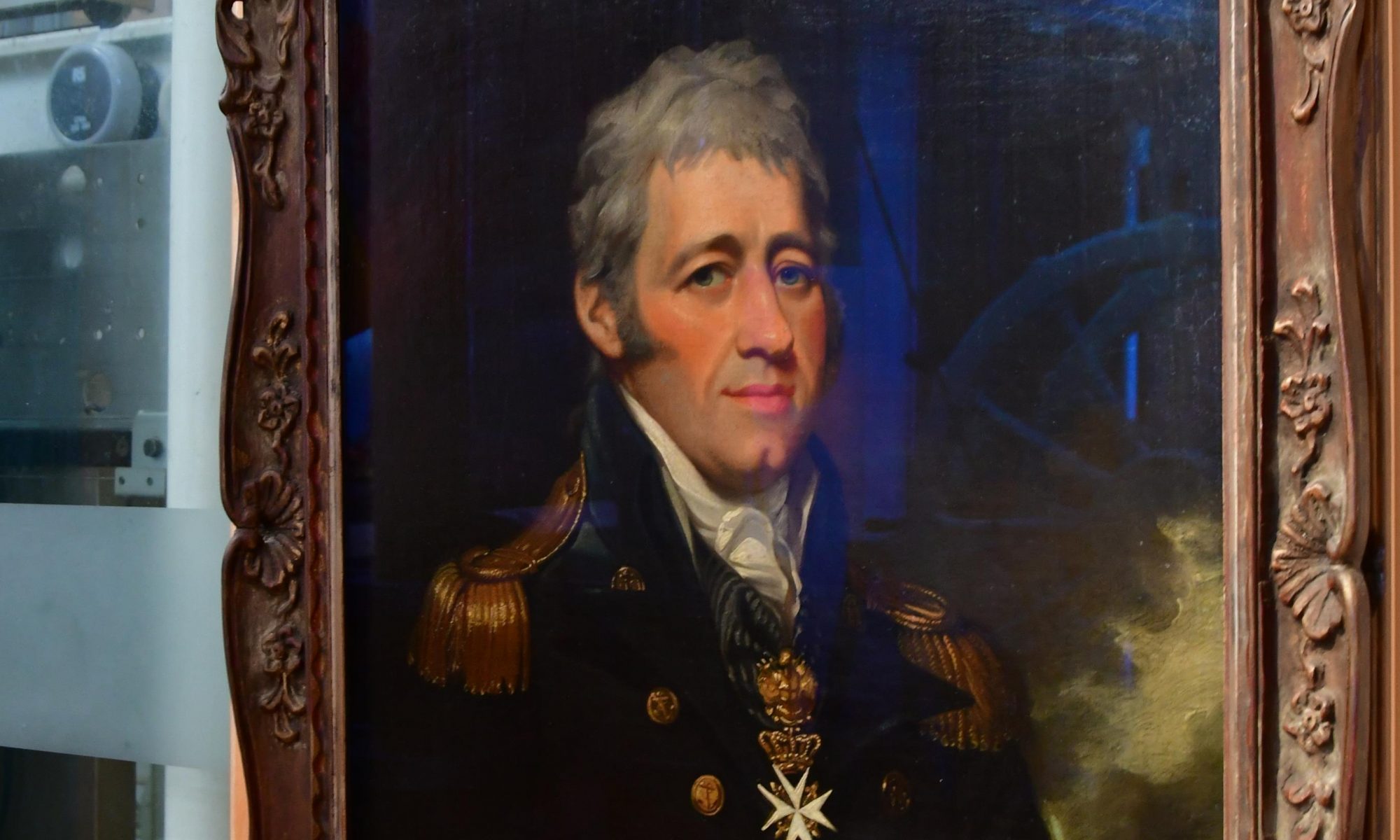
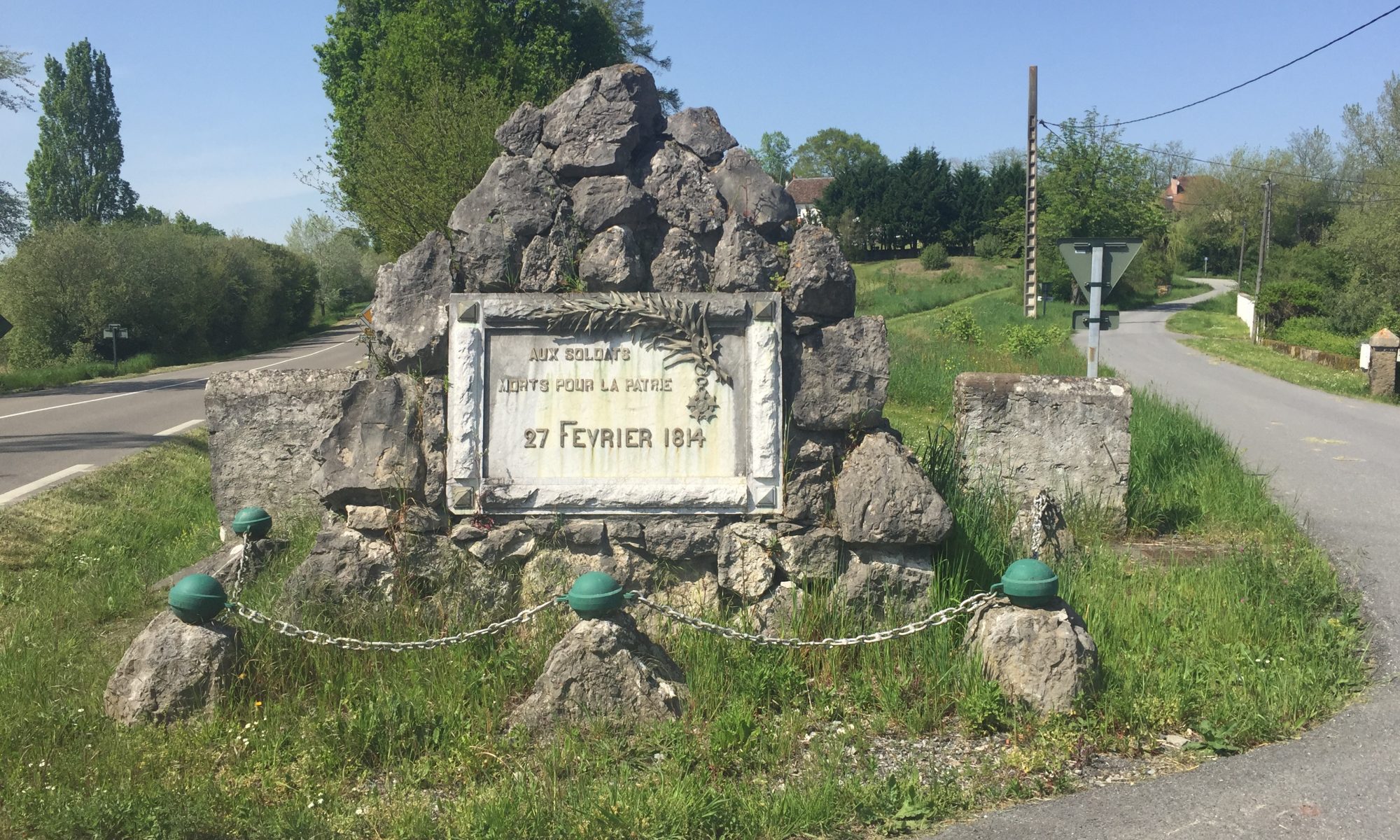
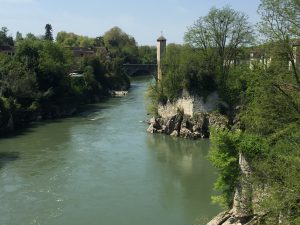 The Battle of Orthez took place on 27 February 1814. After the fierce fighting through the Pyrenees, storms and torrential rain prevented any action for two months.
The Battle of Orthez took place on 27 February 1814. After the fierce fighting through the Pyrenees, storms and torrential rain prevented any action for two months. It was frosty but not frozen on the morning of 27 February, difficult for me to imagine yesterday, exploring the battlefield in soaring temperatures. At 8.30 the 4th division attacked Taupin at St Boes and quickly seized the church. Ross’s brigade swept into the village but were driven back by the battery on the Plassotte knoll. Cole brought up a KGL battery to duel with Taupin’s guns. This immediately became the target of the French batteries on the Plassotte and Luc knolls; two guns were hit and Captain Sympher was killed.
It was frosty but not frozen on the morning of 27 February, difficult for me to imagine yesterday, exploring the battlefield in soaring temperatures. At 8.30 the 4th division attacked Taupin at St Boes and quickly seized the church. Ross’s brigade swept into the village but were driven back by the battery on the Plassotte knoll. Cole brought up a KGL battery to duel with Taupin’s guns. This immediately became the target of the French batteries on the Plassotte and Luc knolls; two guns were hit and Captain Sympher was killed. Orthez is just over thirty miles to the east of Bayonne, a pretty little town on the river Gave de Pau. The original bridge, with its distinctive sentry tower in the centre, is still there and can be seen from the modern bridge. We drove through the town to view Wellington’s deployment area up past the church and then drove up towards Baights de Bearn to see the spurs where Picton’s men would have been deployed to the right of the road.
Orthez is just over thirty miles to the east of Bayonne, a pretty little town on the river Gave de Pau. The original bridge, with its distinctive sentry tower in the centre, is still there and can be seen from the modern bridge. We drove through the town to view Wellington’s deployment area up past the church and then drove up towards Baights de Bearn to see the spurs where Picton’s men would have been deployed to the right of the road. Turning right after St Boes we drove along the ridge held by Soult’s men. The 52nd would have climbed up the gulley to the right to appear between Taupin and Rouget’s division. It doesn’t look like a particularly easy climb and given the time of year it may well have been very boggy. There is a memorial to General Foy’s men on the left-hand side further along the road.
Turning right after St Boes we drove along the ridge held by Soult’s men. The 52nd would have climbed up the gulley to the right to appear between Taupin and Rouget’s division. It doesn’t look like a particularly easy climb and given the time of year it may well have been very boggy. There is a memorial to General Foy’s men on the left-hand side further along the road.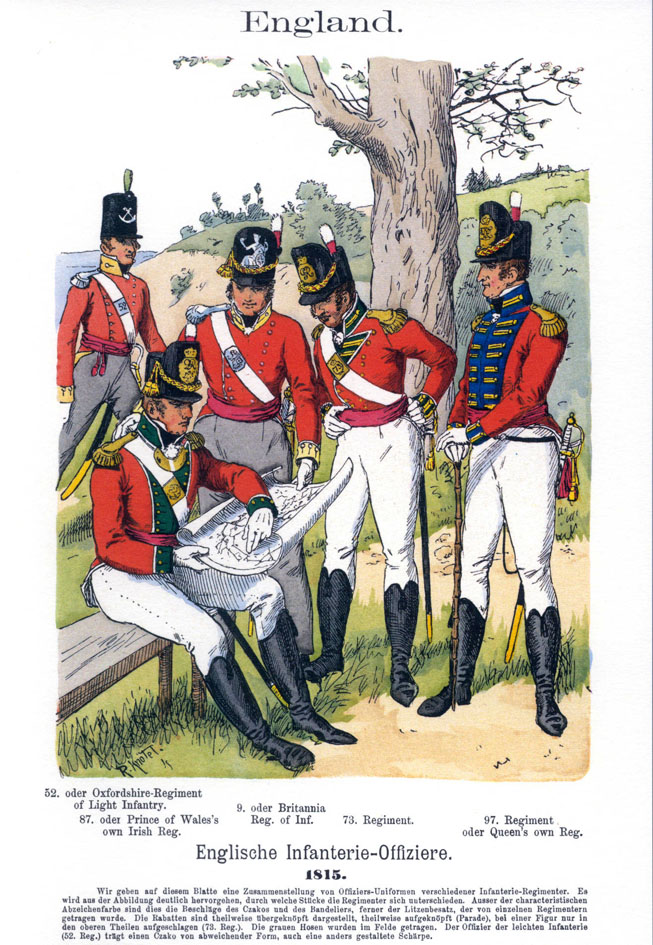
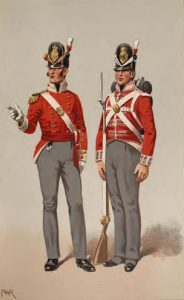
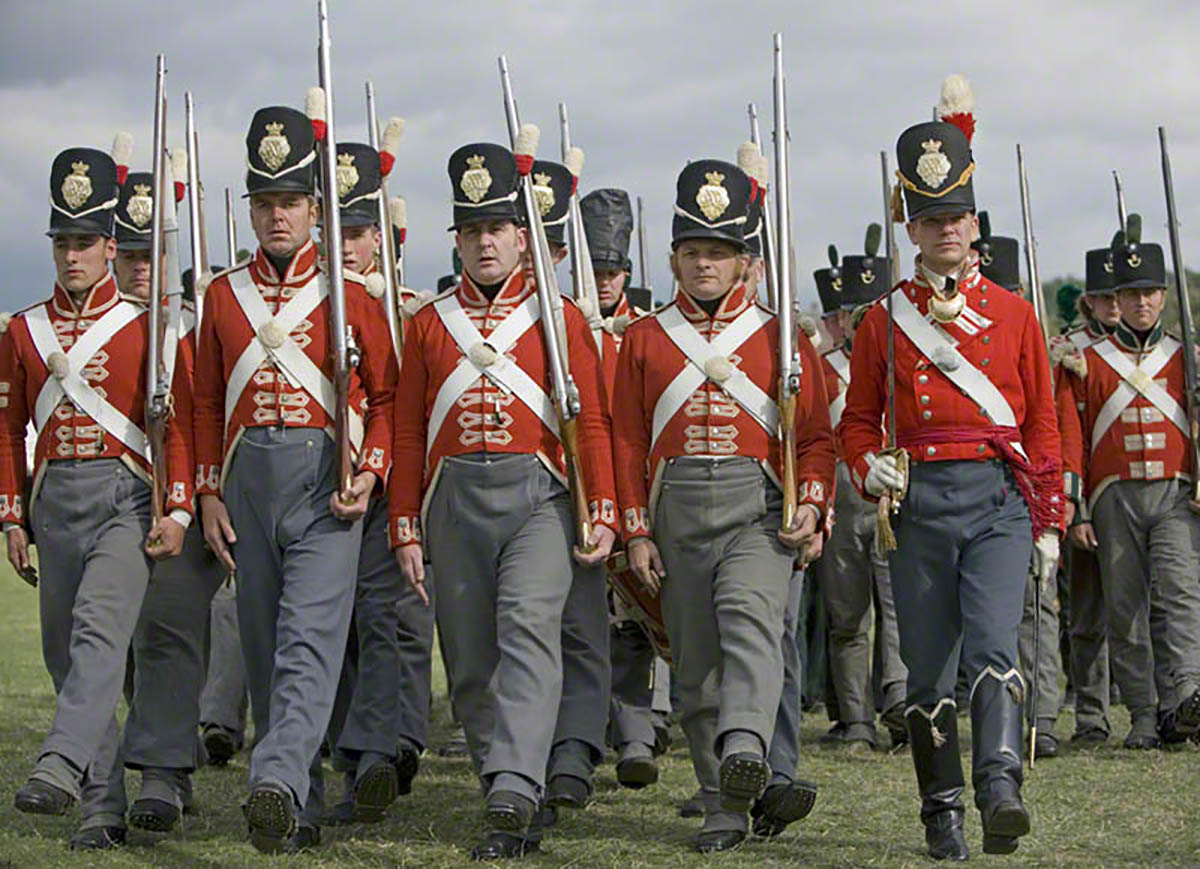
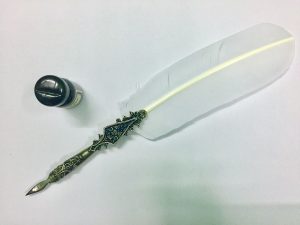 I’ve spent some time over the past week or two reading accounts of late eighteenth and early nineteenth century courts martial for my next book,
I’ve spent some time over the past week or two reading accounts of late eighteenth and early nineteenth century courts martial for my next book, 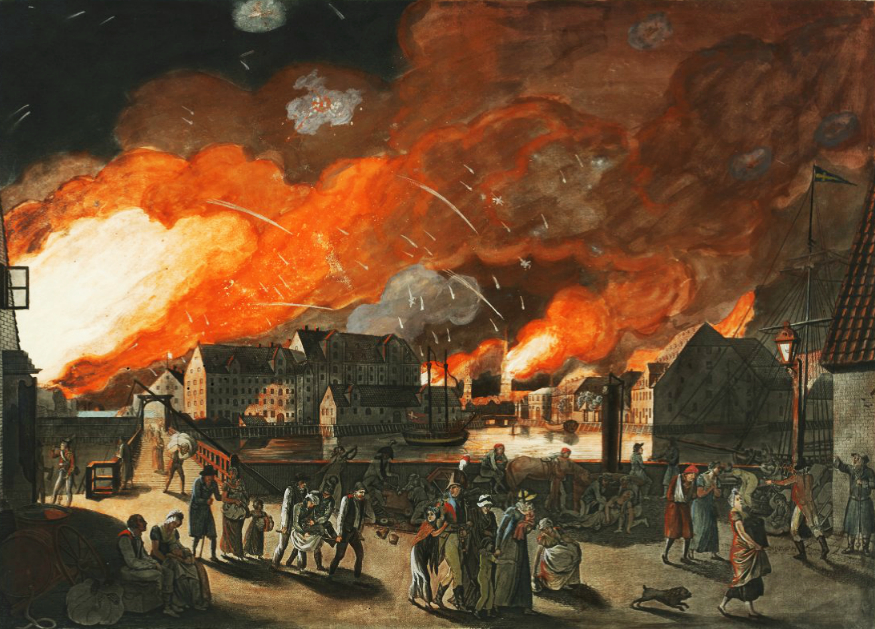
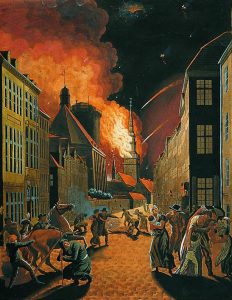
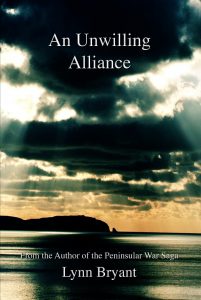
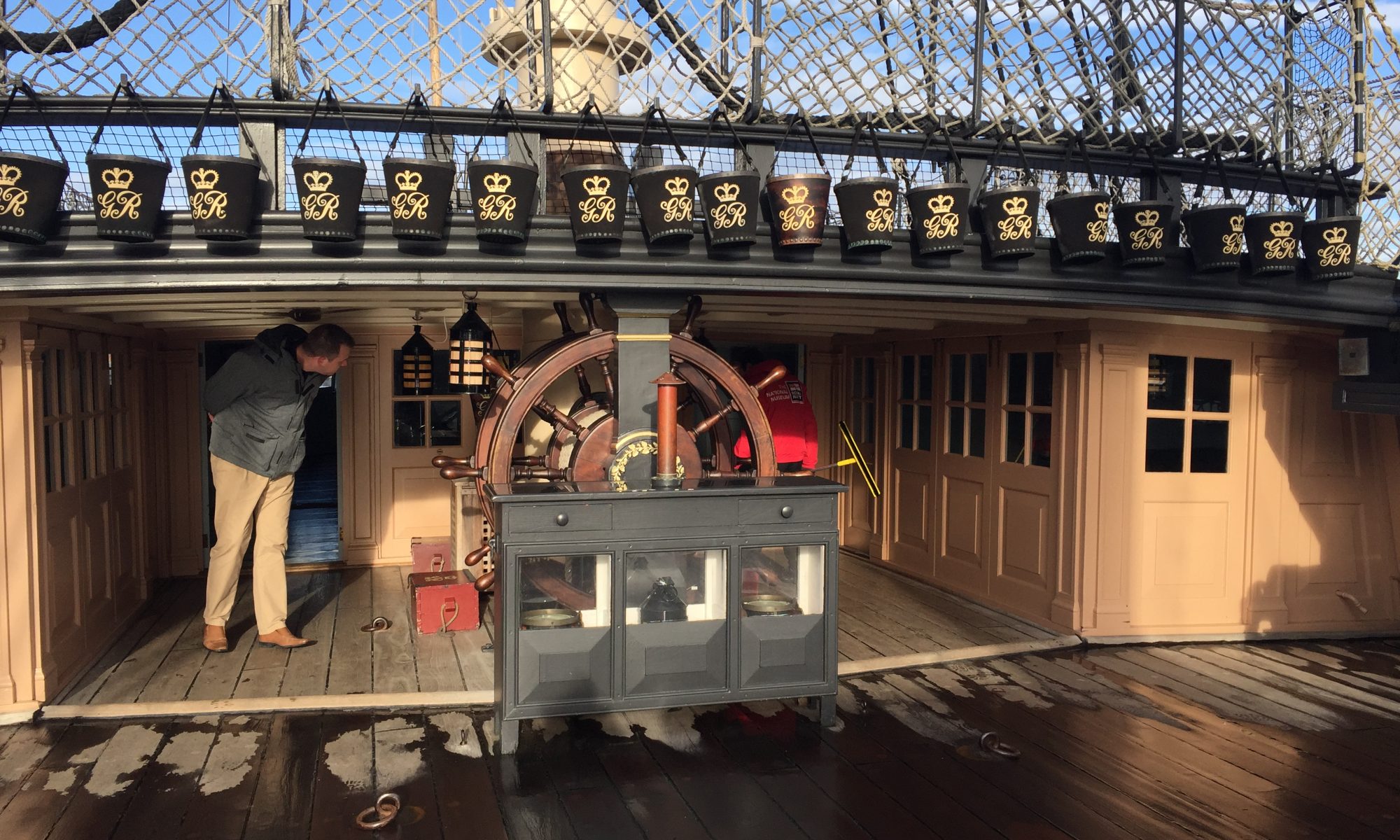
 The
The 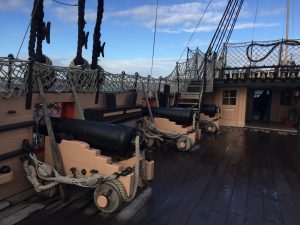 HMS Victory
HMS Victory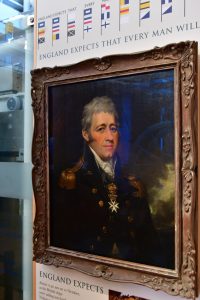 National Museum of the Royal Navy
National Museum of the Royal Navy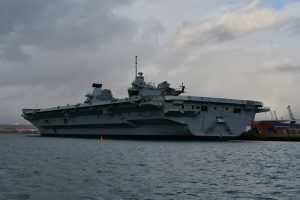 Harbour Tour
Harbour Tour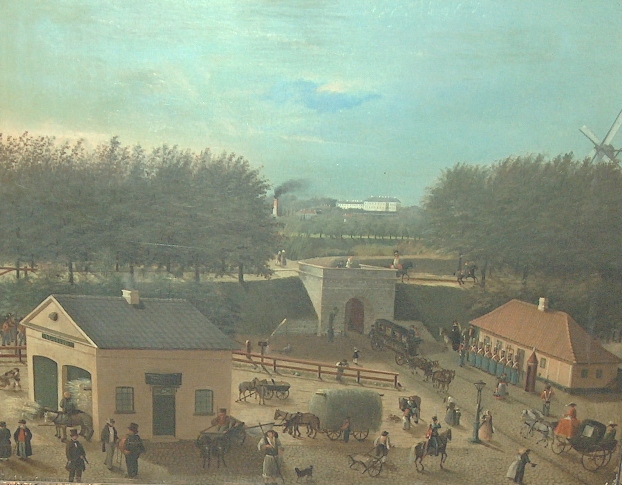
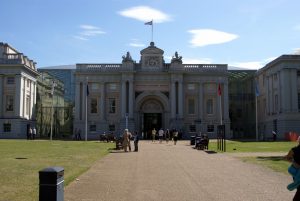
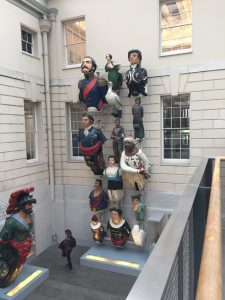 The gallery concerned with traders explores the relationship between Britain and the wider world, particularly the powerful East India Company which spread its influence until it controlled huge areas of territory in India. I found this fascinating, partly because I studied this at University and partly because I spent time researching the Company in India when I was writing about Assaye in
The gallery concerned with traders explores the relationship between Britain and the wider world, particularly the powerful East India Company which spread its influence until it controlled huge areas of territory in India. I found this fascinating, partly because I studied this at University and partly because I spent time researching the Company in India when I was writing about Assaye in 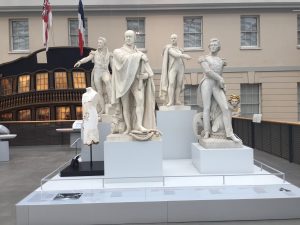 Other galleries explored the maritime history of London, the first world war and in Voyagers, the personal significance of Britain’s maritime story. I particularly liked the exploration of Turner’s famous painting of Trafalgar which analysed the painting and it’s meaning in the context of national pride and naval power following the battle.
Other galleries explored the maritime history of London, the first world war and in Voyagers, the personal significance of Britain’s maritime story. I particularly liked the exploration of Turner’s famous painting of Trafalgar which analysed the painting and it’s meaning in the context of national pride and naval power following the battle.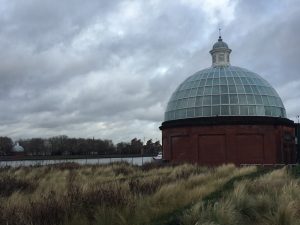 We used to take the bus to the Isle of Dogs back in the sixties and seventies and then walk through the foot tunnel to Greenwich. The foot tunnel is a piece of history in itself, a masterpiece of late Victorian engineering which opened in 1902 and was built to replace an expensive and unreliable ferry service which took workers living south of the river to work in the docks and shipyards. The entrances at each end are beneath glazed domes and I can remember the joy of running through the tunnel calling out and hearing my voice echo, bouncing off the walls eerily. We used to count the steps at each end. There were lifts but for some reason we seldom used them.
We used to take the bus to the Isle of Dogs back in the sixties and seventies and then walk through the foot tunnel to Greenwich. The foot tunnel is a piece of history in itself, a masterpiece of late Victorian engineering which opened in 1902 and was built to replace an expensive and unreliable ferry service which took workers living south of the river to work in the docks and shipyards. The entrances at each end are beneath glazed domes and I can remember the joy of running through the tunnel calling out and hearing my voice echo, bouncing off the walls eerily. We used to count the steps at each end. There were lifts but for some reason we seldom used them.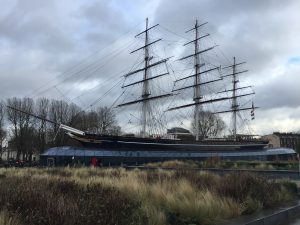 A visit to Greenwich is both a research aide for the new book and a trip down memory lane. The strong sense of standing with both feet in maritime history is just what I need as I embark on the second half of my book which places me aboard a Royal navy ship bound for Copenhagen in 1807 under Admiral Gambier. But there is also a sense of standing with at least one foot in my own past, a child growing up in the East End with parents who took us to some historic site almost every weekend. There is a strong link between that excited little girl standing on the deck of an old ship and trying to imagine how it felt to sail in her and the woman writing a novel of those who did. I owe that as a debt to the parents who gave me that sense of history and why it matters to all of us.
A visit to Greenwich is both a research aide for the new book and a trip down memory lane. The strong sense of standing with both feet in maritime history is just what I need as I embark on the second half of my book which places me aboard a Royal navy ship bound for Copenhagen in 1807 under Admiral Gambier. But there is also a sense of standing with at least one foot in my own past, a child growing up in the East End with parents who took us to some historic site almost every weekend. There is a strong link between that excited little girl standing on the deck of an old ship and trying to imagine how it felt to sail in her and the woman writing a novel of those who did. I owe that as a debt to the parents who gave me that sense of history and why it matters to all of us.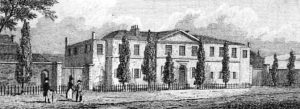
 The home mentioned in
The home mentioned in 